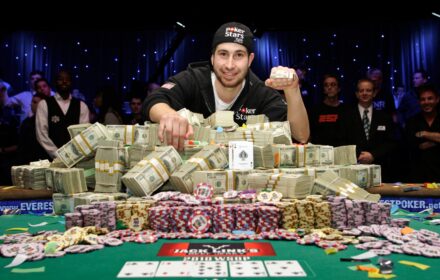Gambling in the Soviet Union has always sparked numerous debates. On one hand, the authorities tightly regulated all aspects of citizens’ lives, including entertainment. On the other hand, a special role was attributed to gambling establishments in the entertainment life, even though they were officially prohibited. The history of casinos in the USSR is a peculiar chronicle of the struggle against vices, modest attempts to adapt Western entertainment to Soviet reality, and the contradictory decisions of the authorities.
Gambling in the USSR: Prohibition and Realities
The Soviet Union was known for its strict laws regarding gambling. Gambling was always officially prohibited, especially after the harsh policies adopted in 1928 aimed at combating capitalist vices. However, despite all the bans, real gambling activities continued to exist in the shadows.
Ban on Gambling
The first serious attempts to regulate gambling in the USSR occurred in the late 1920s when a decree was issued banning all forms of entertainment. The main goal was to establish moral norms and eradicate capitalist indulgences. The ban was actively enforced in the first half of the 20th century and was not reconsidered until the dissolution of the Union. Not only slot machines and roulette were restricted, but card games as well, leading to a decrease in the popularity of formats like poker and bridge among Soviet citizens.
First Casinos in the USSR: Reality and Myths in Industry History
In the Soviet Union, official casinos did not exist, but there were so-called “underground” halls that began to appear in the 1960s when there was an increase in the influx of foreign delegations to Moscow and other major cities.
Games for Foreign Citizens
Since gambling was not officially allowed, there were gaming clubs and closed societies exclusively oriented towards foreign citizens who were permitted to participate in legal gambling activities during diplomatic and cultural visits.
An example can be found in Moscow, where hotels for foreign citizens had closed clubs with money games. These were legal gambling entertainments for foreign delegations, while remaining prohibited for Soviet citizens. In some cases, the rules in such clubs were similar to international standards, but they were restricted from local residents.
Legalization and Alternatives: Sportloto and Card Games
In the history of casinos in the USSR, despite strict prohibitions, alternatives to gambling games became quite popular. One such example was the legalization of lotteries.
Sportloto and Gambling
“Sportloto” undoubtedly became one of the most popular forms of gambling in the USSR. Unlike casinos, Sportloto was relatively legalized and conducted with state support. Prize funds and percentages from sold tickets went towards the development of sports in the country. Although it was not a traditional establishment, the concept became very popular among Soviet citizens.
Card Games
Despite official bans and constant police control, card games in the USSR not only survived but also became rooted in everyday life, albeit on the periphery of public space. Playing poker, preference, burr, or blackjack continued in communal apartments, dacha cooperatives, rented “bachelor” apartments, and even in student dormitories, where a game turned into an informal school of logic, memory, and street smarts.
Unlike the Western model where card clubs operated legally, in the Soviet Union, they remained unofficially prohibited since the late 1920s. However, the stricter the control became, the more inventive the players acted. Underground parties were held strictly by acquaintance: no random people were invited to such gatherings. Even within family circles, there was a taboo—children should not know that their parents were playing preference with guests in the evenings. Although in reality, these were full-fledged sessions with bets, notes, notebooks, and a system of “clean settlement.”
In the intellectual circles of Moscow and Leningrad, preference was considered almost a cultural norm—complex, strategic, and prestigious. Doctors, engineers, teachers, and even some party officials gathered around the table after the theater or conference. Cards were carefully laid out on the table, a decanter with tincture stood in the center, a notebook with a tournament grid lay nearby. Money was used in the form of conditional units to avoid violating the criminal code. However, the final loss of 20-30 “units” often meant very real 30-50 rubles.
Poker Tables
Poker, as a form of intellectual gambling, existed in the USSR on the border between criminal activities and social evenings. It was played in narrow communities—more often in circles of former emigrants, returnees, theater professionals, and translators. Poker required knowledge of rules, complex logic, and confident bluffing. Therefore, it surfaced more in educated circles. At the same time, official propaganda almost completely ignored the existence of poker—neither in cinema nor in the press of the 1950s-1980s was the game mentioned. Only in criminal chronicles were there mentions: “an illegal gathering with a card game for money was discovered.”
Evenings were part of a semi-underground leisure, where light vices and cultural self-organization intertwined. Players hid decks in books, disguised chips as buttons, and discussed bets in half-whispers. Even in closed cities like Tomsk-7 or Zheleznogorsk, groups of card enthusiasts gathered—without advertising, without publicity, but with iron regularity. The game served not only for gambling but also as a release: a rare opportunity to feel control, excitement, and a sense of victory in an extremely controlled society.
Card games in the USSR were a whole subculture, living in the underground, adapting to the conditions of ideological control and economic constraints. It did not disappear even in the late 1980s—on the contrary, with the growing interest in the West and the beginning of perestroika, these gatherings gained a new breath, becoming the precursor of the future gambling salons of the nineties.
Conclusion
The history of casinos in the USSR is a story of the evolution of approaches to gambling. In the Soviet Union, there were two opposing trends: on one hand, strict prohibition, and on the other, a black market that persisted despite all efforts of the authorities. At the same time, alternatives to gambling games, such as lotteries and card tables, found their audience and continued to exist in the shadows.
 en
en  ru
ru  de
de  ar
ar  es
es  nl
nl  hi
hi  fr
fr  it
it  pt
pt  el
el 



